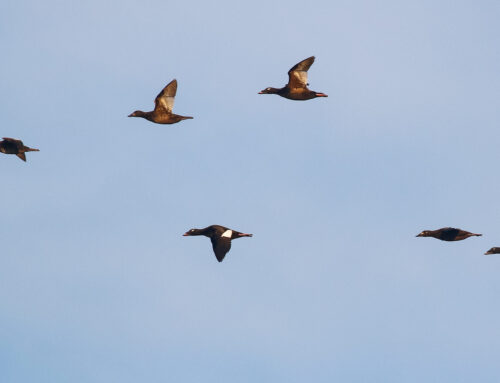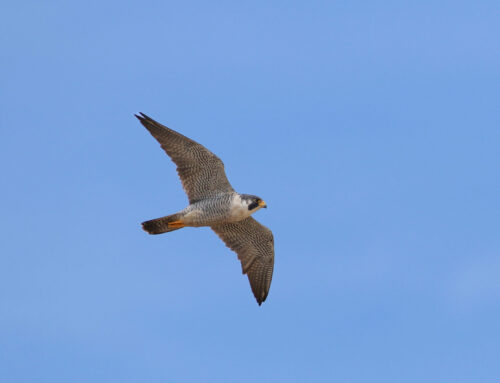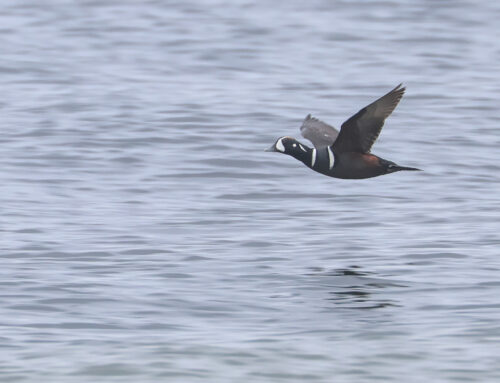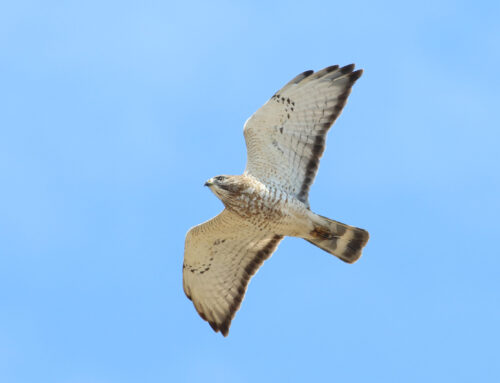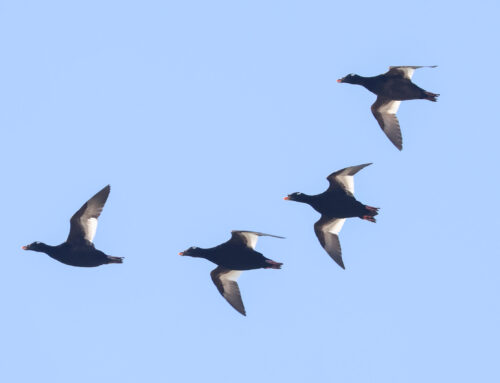September 15 marked one month since we started the waterbird count this fall. If you look at the data we’ve collected thus far, you might see some trends emerge. Some species have largely departed, some are beginning to show up in numbers. While a few of these changes happened quickly, like the gigantic flight days where we’re rushing to keep up with all the activity, others have happened gradually such as a species’ migration slowing down week after week.
First, let’s talk about the highest count: The gold medal goes to the 7,273 Red-necked Grebe that have passed by the point. This migration started well before the count did, but the largest documented pushes were two days with over 1,000 birds passing and four separate days surpassing 500 individuals. The grebes continue to pass by, fluctuating in quantity but still in respectable numbers. Today we counted 155, for instance, and we anticipate hundreds more.

If you follow the timeline you’ll see spikes in species like Common Tern where in two days we saw a majority pass by. The teal and shoveler numbers have started to slow down while the widgeons and pintails have picked up. Diving ducks like scaup and scoter are trickling in, forecasting the large numbers we’ll see soon. We keep saying any day now the loons will fill the skies. Already the numbers are starting to ramp up to this much-anticipated migration, foreshadowed by the uptick in other similar northern breeders.
We started the count with a nice diversity of resident shorebirds supplemented by migrants. Species like Lesser Yellowlegs, who at first were our everyday neighbors at the count, have largely left. Not to say it’s the end of shorebirds though, we’ve had increasing amounts of Pluvialis moving through lately and expect a few others to grace the point before the season is over. A Red Knot flew by yesterday and a Long-Billed Dowitcher a few days prior, to note.
Although over 24,000 birds have been counted thus far, we’re really still at the very beginning of this amazing event. The quantity of migrants is astounding, but the diversity keeps us equally excited. Rarities from extremely different regions such as Arctic Tern and Lark Sparrow have wandered through. The three species of jaegers are constantly keeping us on our toes and oddities like a Pie-billed Grebe that was on the pond the morning a Great Egret flew by are fun surprises.
Summer is giving way to fall and it’s everywhere. The leaves are starting their anticipated changes, the temperatures are slowly dropping, and the birds move to the ancient rhythms that they have for millennia. Every sunrise opens a new chapter to this story.
As a reminder, our data is displayed live as we record it on Dunkadoo here.
Text by Fall Waterbird Counter Steve Backus


